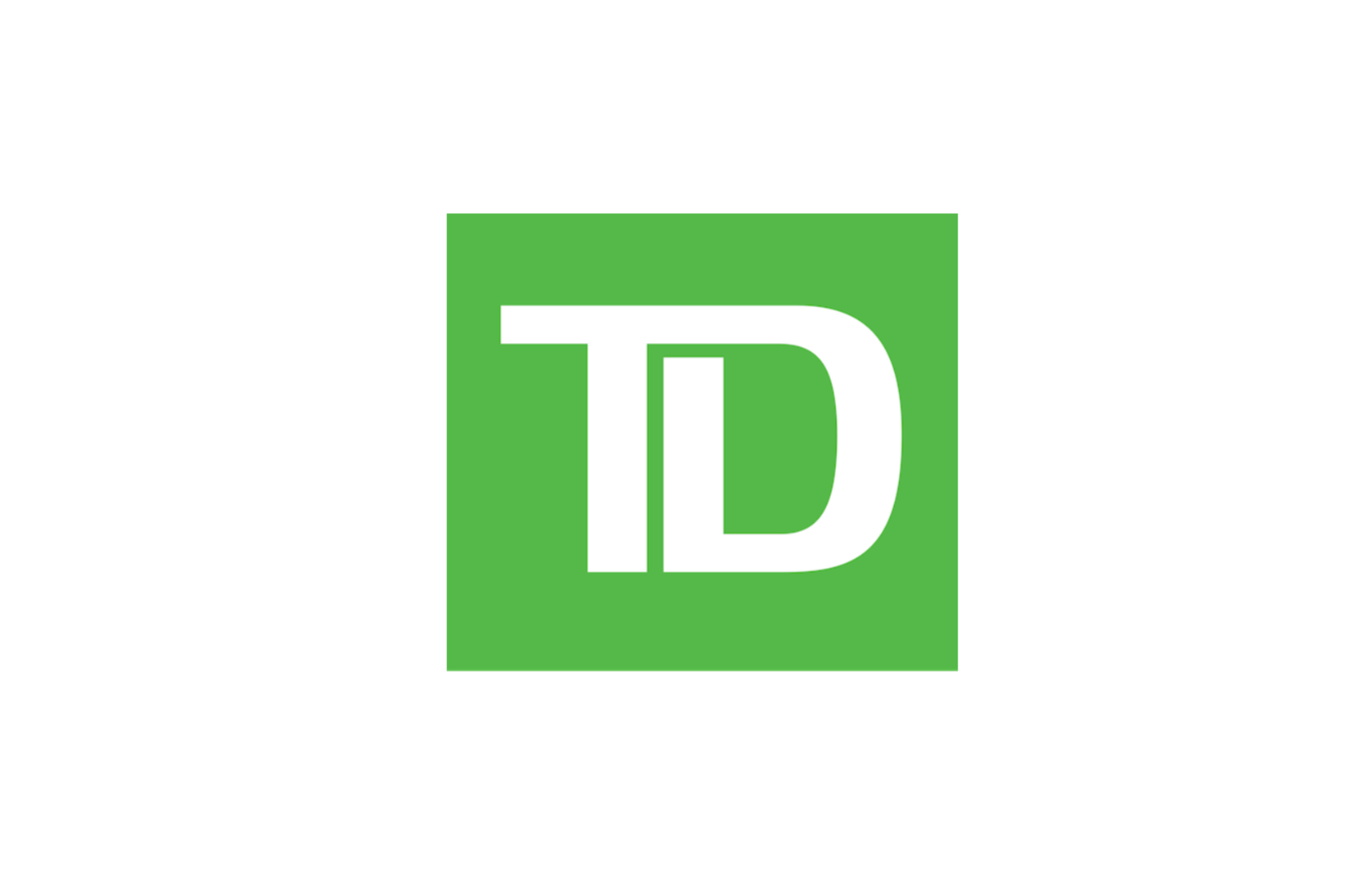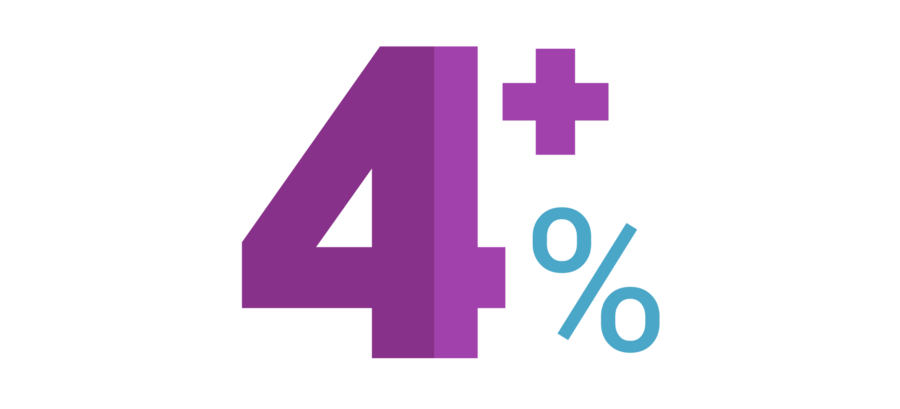
Toronto-Dominion Remains One of the Strongest Canadian Banks as Coronavirus Threat Grows
The Canadian banking industry has had quite a run. Not a single bank has failed in over 20 years, and the largest banks have paid stable or higher dividends for more than a century:
- Royal Bank of Canada (RY): since 1870
- Canadian Imperial Bank of Commerce (CM): since 1868
- Toronto-Dominion Bank (TD): since 1857
- Scotiabank (BNS): since 1833
- Bank of Montreal (BMO): since 1829
Compared to their American counterparts, Canadian banks sailed through the 2008 housing crash (see below) and have arguably not faced a major downturn in the credit cycle for at least a couple of decades.

However, the coronavirus pandemic, oil-price crash (the energy sector accounts for 11% of Canada's economy), and plunge in interest rates have created a perfect storm with no precedent for banks.
It seemed unthinkable that thousands of businesses and millions of people could be put out of work almost simultaneously, but that's the reality the global economy now faces.
Coupled with the highly indebted nature of Canadian consumers, Canada's largest banks could be in for their biggest test in decades.
Based on our full analysis below, we don't believe Canada's biggest banks are at risk of an imminent dividend cut.
However, in recognition of the unprecedented financial and regulatory uncertainty facing the industry, we are downgrading Toronto-Dominion Bank's Dividend Safety Score from Very Safe to Safe.
If it begins to appear likely that the coronavirus outbreak will cause Canada to experience an extreme real estate crash (more than a "normal" recession) or increase regulatory pressure on banks to further restrict shareholder distributions, then we could downgrade our rating.
For now, it's too soon to say given the unusually wide range of outcomes facing the industry.
Overall, we believe Toronto-Dominion remains one of the strongest Canadian banks. The firm generates around 60% of its net income in Canada and most of the rest in America. In both countries, its capital ratio (more on that below) ranks in the top three against its peers, providing one of the largest buffers to absorb losses, and the bank maintains an industry-leading A credit rating from S&P.
Toronto-Dominion also has little exposure to cyclical and riskier businesses such as investment banking and trading (less than 15% of profits), focusing instead on simple retail banking products and services such as residential mortgages (33% of loans), home equity lines of credit (14%), and credit cards (5%).
Please see our investment thesis on Toronto-Dominion for more background information about the company.
***
However, in recognition of the unprecedented financial and regulatory uncertainty facing the industry, we are downgrading Toronto-Dominion Bank's Dividend Safety Score from Very Safe to Safe.
If it begins to appear likely that the coronavirus outbreak will cause Canada to experience an extreme real estate crash (more than a "normal" recession) or increase regulatory pressure on banks to further restrict shareholder distributions, then we could downgrade our rating.
For now, it's too soon to say given the unusually wide range of outcomes facing the industry.
Overall, we believe Toronto-Dominion remains one of the strongest Canadian banks. The firm generates around 60% of its net income in Canada and most of the rest in America. In both countries, its capital ratio (more on that below) ranks in the top three against its peers, providing one of the largest buffers to absorb losses, and the bank maintains an industry-leading A credit rating from S&P.
Toronto-Dominion also has little exposure to cyclical and riskier businesses such as investment banking and trading (less than 15% of profits), focusing instead on simple retail banking products and services such as residential mortgages (33% of loans), home equity lines of credit (14%), and credit cards (5%).
Please see our investment thesis on Toronto-Dominion for more background information about the company.
***
Today, each large Canadian bank appears to have healthy fundamentals. Payout ratios sit between 40% and 50%, credit ratings are strong, impaired loans as a percentage of total loans are relatively low, and direct exposure to the energy sector is fairly limited.

Each bank's common equity tier 1 (CET1) ratio also sits between 11% and 12%, well above the 4.5% minimum required by regulators and the 7-8% levels recorded prior to the 2007-09 financial crisis.
The CET1 ratio divides a bank's capital (common stock and retained earnings) by its risk-weighted assets (a bank's loans and investments are assigned values based on how risky they are deemed to be) to measure how much of a buffer it has to absorb credit losses during a downturn.
The biggest question is how far banks' capital ratios will fall if the perfect storm of coronavirus-related shutdowns, plunging interest rates, and depressed oil prices ends Canada's current credit cycle.
If concerns rise that more capital should be set aside given the extremely uncertain economic environment, reducing dividends is one of the easiest levers to pull to retain more earnings. However, regulators believe Canada's banks (and their dividends) could survive a lot of adversity before reaching that point.
For example, in 2019, Canadian banks passed stress tests amid "extreme" hypothetical scenarios including a 40% crash in housing prices, according to Bloomberg.
Cheng Hoon Lim, Assistant Director at the International Monetary Fund, noted that "under even that extreme scenario the [Canadian] banking system was resilient and that's because they have sufficient capital and sufficient liquidity buffers."
The fallout from the coronavirus could prove to be even more severe then those tests, but we don't have much other data to analyze today.
Canada's government is taking action to reduce downside risk, too. Officials announced a bold stimulus plan to help the country's people and businesses deal with losses, and on March 27 the Bank of Canada slashed interest rates to a record low while also unveiling a large scale asset purchase program.
However, the strain on credit markets and need for liquidity grows with each passing day that parts of the economy remain idled.
The market appears to be concerned that the virus outbreak could result in widespread bankruptcies for financially weaker malls, retailers, hotels, restaurants, energy firms, and other businesses, while also causing households to fall behind on mortgage payments, credit card debt, and other obligations.
It's too soon to say how this unprecedented situation will be resolved and how much damage it could cause to banks' balance sheets, which are generally in much better shape than they were heading into the financial crisis.
What's clearer is that banks are coming under greater political pressure to do more to support their communities.
On March 13, the Office of the Superintendent of Financial Institutions (OSFI), Canada's bank regulator, reduced the amount of capital banks are required to hold to protect against losses to the lowest level on record.
This increased the lending capacity of Canada's largest banks by $300 billion, with hopes of encouraging (and perhaps eventually forcing) them to lend more to distressed businesses and consumers.
However, OFSI made clear that this action was not taken to support shareholder distributions, ordering banks to withhold from increasing their dividends and repurchasing shares until the country has worked through this period of economic disruption.
Banks are feeling pressure to step up in other ways for their communities, too.
For example, the major Canadian banks generate around 50% of their revenue from net interest income (i.e. making loans), and residential mortgages are their biggest exposure (representing around 30% to 50% of loans in most cases).
With many people suddenly out of work and unable to pay their mortgages due to the coronavirus pandemic, Canada's six largest banks decided recently to let their customers defer their mortgage payments for up to six months.
On March 27, Canada's bank regulator said these unpaid loans could still be classified as performing loans so banks' CET1 ratios (and willingness to lend more) wouldn't take a hit, but these types of actions will still weigh on earnings (and reduce the amount of capital retained after paying dividends).
Depending on how severe and drawn out the coronavirus crisis becomes in Canada, political pressure could mount for its largest banks to make even more sacrifices for businesses and households, potentially at the expense of their shareholders.
This is already taking shape in other parts of the world. For example, on March 27, the European Central Bank recommended that eurozone banks suspend their dividends through at least October 2020 to prioritize supporting the economy and absorbing losses.
It didn't matter that most banks' dividends were covered by earnings and their capital levels were healthy. This is an unprecedented situation which could call for unprecedented action, and putting shareholder distributions before the wellbeing of the economy isn't a good political look.
It's hard to imagine the Canadian banking industry following a similar path given the long-term dividend track records these firms have, but it's at least worth acknowledging that banks are in uncharted waters during this pandemic.
Given some of these concerns, perhaps it's not surprising to see Canada's biggest banks trading at unusually high dividend yields and low price-to-book multiples relative to history. Investors have quickly priced in a lot of bad news, and no one has a crystal ball.
On one hand, the track record and unique industry structure of Canadian banks seems like it should earn them the benefit of the doubt. Not only that, but they are even better capitalized than they were heading into the 2007-09 financial crisis, and governments are unleashing unprecedented stimulus packages to stem the economic effects of the coronavirus pandemic.
On the other hand, with highly indebted consumers and a real estate market that didn't correct like America's during the financial crisis, it's difficult to guess what a worst-case scenario might look like for Canadian banks if the coronavirus inflicts severe and prolonged damage across the economy.
Investors considering Canadian banks should keep these uncertainties in mind. It's rare to have a shot at these firms at valuations like these, but banks also face an unusual set of financial and political challenges.
We will continue monitoring the situation closely and will provide updates as new information arrives.



